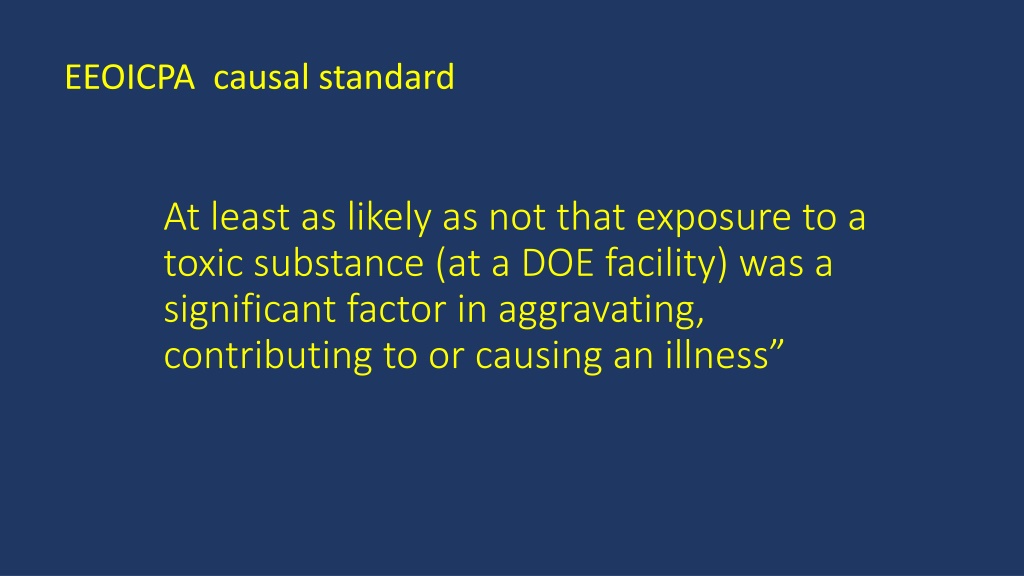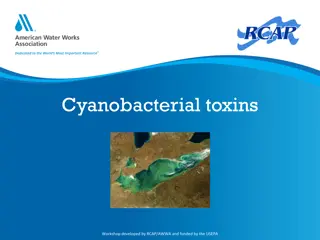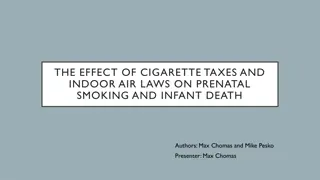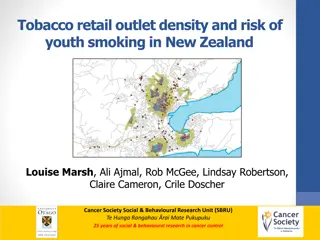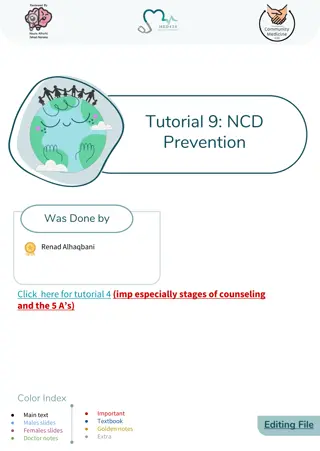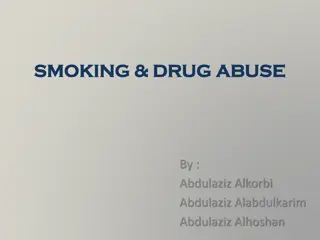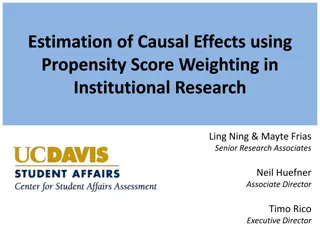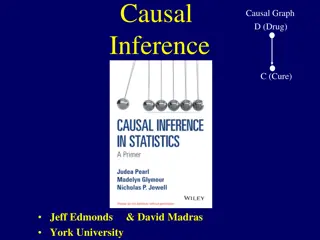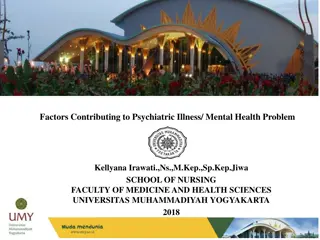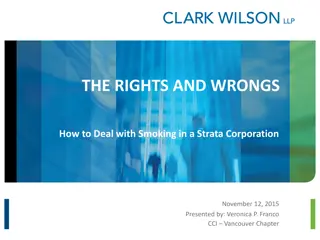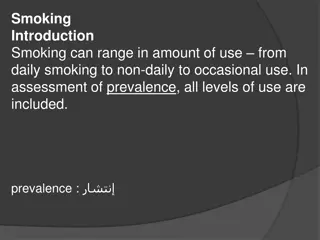Understanding Causal Factors in Illness: Toxins, Smoking, and Contributing Causes
Causal standards for illness attribution, toxins' role in disease onset and expression, and the impact of factors like smoking and contributing causes on health outcomes are explored. The distinction between certain and contributing causes, as well as the level of certainty in carcinogen classifications by IARC and WHO, are discussed.
Download Presentation

Please find below an Image/Link to download the presentation.
The content on the website is provided AS IS for your information and personal use only. It may not be sold, licensed, or shared on other websites without obtaining consent from the author. Download presentation by click this link. If you encounter any issues during the download, it is possible that the publisher has removed the file from their server.
E N D
Presentation Transcript
EEOICPA causal standard At least as likely as not that exposure to a toxic substance (at a DOE facility) was a significant factor in aggravating, contributing to or causing an illness
Toxin Disease onset Toxin Disease causation Disease expression
Complete cause effect
Acute inhalation of chlorine Respiratory irritation
Partial cause (acts with other causes) effect
Smoking Lung cancer 10% of smokers get lung cancer
Partial cause = contributing cause contributing factors are causal factors
Hypertension Smoking Elevated cholesterol Heart attack Family history, CAD All are recognized risk factors for coronary heart disease. All are contributing causes.
EEOICPA causal standard At least as likely as not that exposure to a toxic substance (at a DOE facility) was a significant factor in aggravating, contributing to or causing an illness
Many contributing causes contribute less that 50% of causation.
Distinction a) Level of certainty that a toxin is a cause of a disease versus b) Degree to which a toxin contributes to an illness
Level of certainty IARC WHO Classification of carcinogens Group 1 Carcinogenic to humans 118 agents Group 2A Probably carcinogenic to humans 79 agents Group 2B Possibly carcinogenic to humans 291 agents Not classifiable as to its carcinogenicity to humans Group 3 507 agents Probably not carcinogenic to humans Group 4 1 agent
a) Level of certainty = more likely than not, i.e., probable versus possible
b) degree to which a toxin contributes to an illness Contribution can be less than 50%.
Is secondhand smoke more likely than not an aggravating, contributing, or causal factor in lung cancer?
Surgeon General Second hand smoke and lung cancer (52 spousal studies, 25 workplace studies) RR= 1.20 Conclusion: Exposure of adults to secondhand smoke causes .lung cancer. 2006 Surgeon General s Report https://www.ncbi.nlm.nih.gov/books/NBK44330/#rpt-smokeexp.ch7.s2
Does toxin have to cause a two-fold increased risk for disease to be a contributing cause?
Does EEOICPA specify a level of contribution? Is it even possible for most multifactorial diseases to quantify the contribution of each risk factor?
EEOICPA causal standard At least as likely as not that exposure to a toxic substance (at a DOE facility) was a significant factor in aggravating, contributing to or causing an illness
